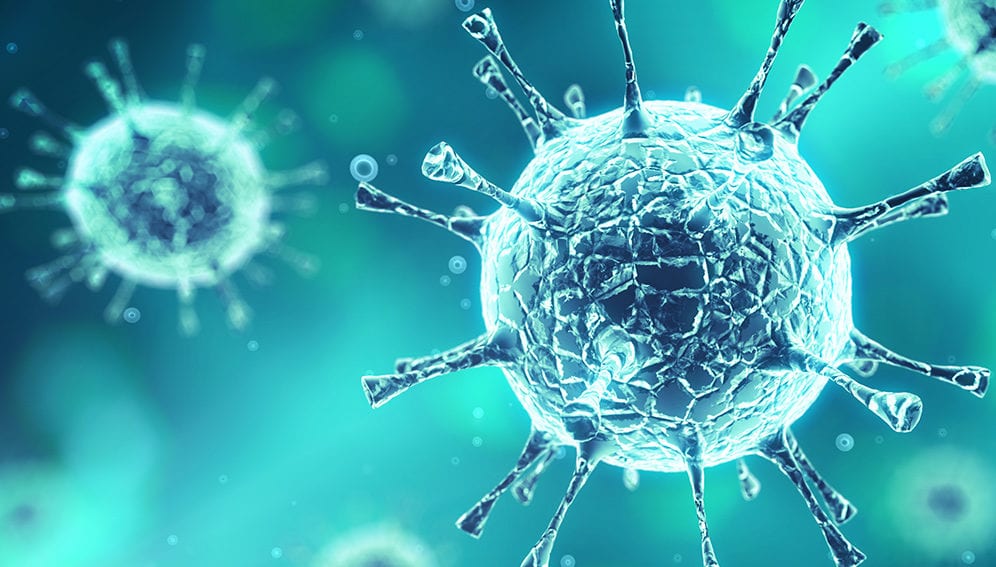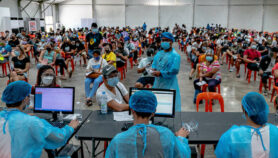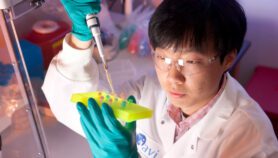07/03/19
AIDS success ‘unworkable’ for vast majority

By: Julien Chongwang
Send to a friend
The details you provide on this page will not be used to send unsolicited email, and will not be sold to a 3rd party. See privacy policy.
AIDS, caused by infection with the human immunodeficiency virus (HIV) virus, is one of the three big diseases affecting people in the developing world along with tuberculosis and malaria. Around a million people died from AIDS-related illnesses in 2017.
Researchers from University College London (UCL) reported 5 March in the journal Nature the case of an HIV-positive man who, after receiving a bone marrow transplant, no longer showed any sign of the AIDS virus, 18 months after he had stopped taking antiretroviral therapy.
Presenting their work on the same day at the annual conference on retroviruses and opportunistic infections in Seattle, USA, the researchers said they used largely the same method which had been used in 2007 in Berlin on Timothy Ray Brown.
“Even reaching a very limited number of people to achieve ‘near-cure’ of HIV infection is a welcome achievement. It still seemed utopian a decade ago.”
Avelin Aghokeng
The method involves finding a compatible donor who additionally has a mutation in a gene called CCR5.
It is this gene that causes the AIDS virus to penetrate the immune cells and multiply. But the mutation prevents the virus from entering and taking hold.
As a stem cell, the transplanted bone marrow will produce new immune cells containing the mutated CCR5 gene which will gradually replace the old cells, blocking the virus, which can no longer replicate.
"Continuing our research, we need to understand if we could knock out this receptor in people with HIV, which may be possible with gene therapy," said Ravindra Gupta, lead author of the study in a statement published by UCL.
There are strong reservations about this method, however, among parts of the scientific community.
Eric Delaporte, head of the laboratory for translational research on HIV and infectious diseases at the Institute of Research for Development (IRD), in France, says the rare genetic mutation is only found in one per cent of the population.
"As is often the case with AIDS, we are dealing with an overrepresentation of a result where we speak of ‘healing’, when in practice, for the millions of people living with HIV, this is not the solution," he tells SciDev.Net.
‘False hope’
"You have to put the patient in aplasia, that is, destroy the cells with chemotherapy and then transplant the marrow of a compatible donor," he says.
"During the aplasia phase when cells are destroyed, the slightest infection can kill, because the patient has no defence. It must therefore take place in a specialist unit with a sterile room, so with an advanced, sophisticated and expensive medical infrastructure.”
For Delaporte, the excitement around the story gives "false hope".
But Michel Sidibé, executive director of UNAIDS, gives a more nuanced view.
“Although this breakthrough is complicated and much more work is needed, it gives us great hope for the future that we could potentially end AIDS with science, through a vaccine or a cure,” he wrote in a press release issued by the organisation.
“However, it also shows how far away we are from that point and of the absolute importance of continuing to focus HIV prevention and treatment efforts.
Sidibé’s optimism is shared by Avelin Aghokeng, researcher at the International Centre for Medical Research in Franceville, Gabon.
"Even reaching a very limited number of people to achieve ‘near-cure’ of HIV infection is a welcome achievement. It still seemed utopian a decade ago," he says.
“Advances in research are enriched by such proofs of concept and open up new avenues for research and intervention.”
‘Proof of concept’
The British infectious disease specialist said he hoped “that this will eventually lead to a safe, cost-effective and easy strategy to achieve these results using gene technology or antibody techniques.
The authors of the work prefer to focus on the potential for the scientific community.
"If it is too early to say for sure that our patient is now cured of HIV, the apparent success of stem cells gives hope that new strategies can be developed to combat the disease," says research team member Eduardo Olavarria.
Commenting on the findings in relation to the 2007 case, Aghokeng says the question of reproducibility of a procedure, experiment or intervention is "crucial".
"It is difficult," he says, "to draw important conclusions from a single case. A second success, realized by another research team and in a different patient, allows scientists to confirm the first result and consider the experiment reproducible," he tells SciDev.Net."It also helps to better control the approach, its benefits and also its limitations and dangers. It should be noted that behind this success are also many failures of this approach.”
Meanwhile, everyone in the scientific community agrees that the only way to treat this disease, which affects 37 million people worldwide, according to UNAIDS, is to take antiretrovirals for life.
This piece was produced by SciDev.Net’s Sub-Saharan Africa French desk.













